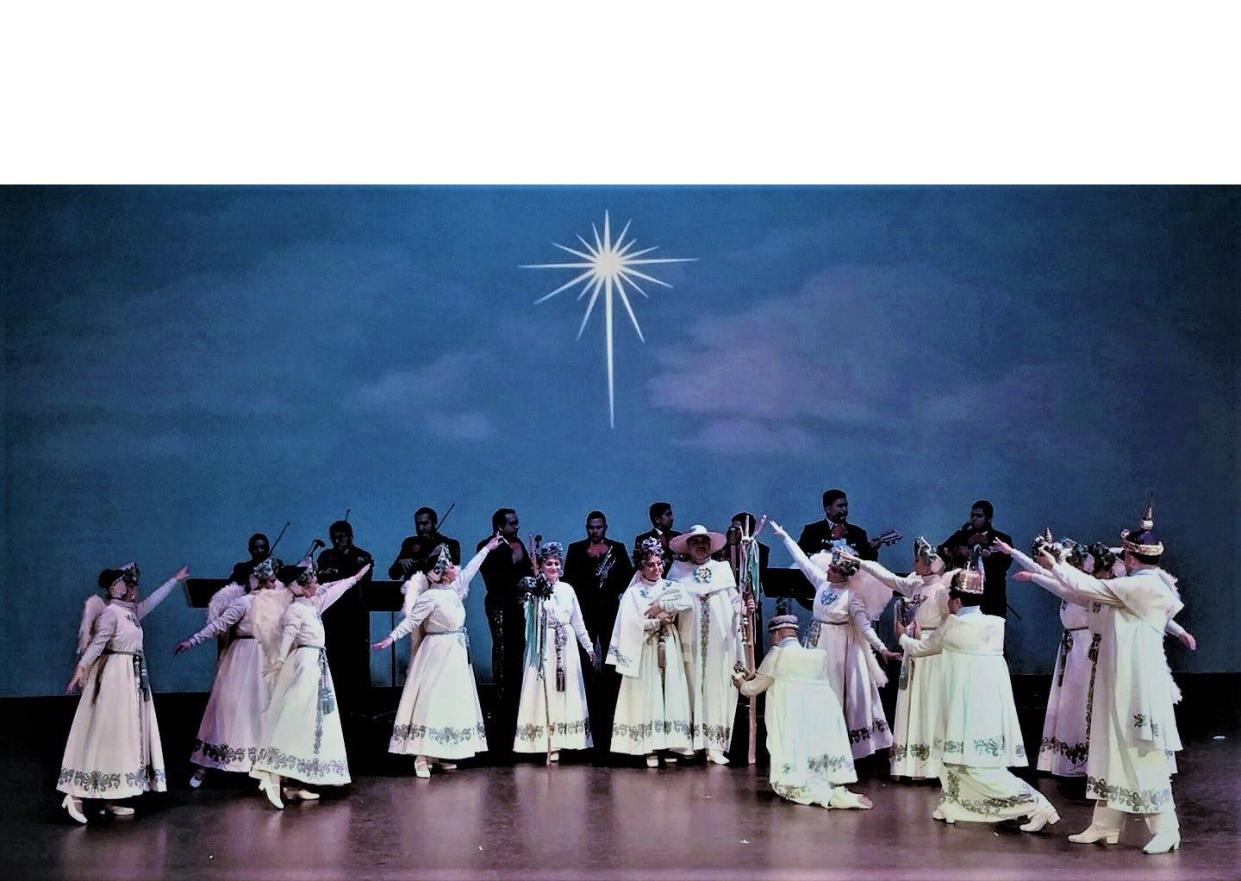Want to have a posada? What to know about Mexican holiday tradition

The celebration of the posada is common along the border in family homes and some Catholic churches in El Paso and Juárez.
The tradition of a posada, which means shelter in Spanish, started off religious in nature as it retraces the journey Mary and Joseph took on their way to Bethlehem and ultimately the nativity of Jesus.
St. Anthony seminarian, Fray Asunción Xicoténcatl of the Order of Friars Minor, the Franciscans, said the Spanish used posadas as a tool for evangelization.
"It was a way to better explain the mysteries to the Indians," he said.
As in Mexico, people generally host posadas any evening, from Dec. 16 through the 23.
In El Paso, the St. Anthony's Seminary is known for its posadas, starting Dec. 16. The seminarians begin with praying of the rosary. The Joyful Mysteries of the rosary reflect on the Annunciation to the Virgin Mary and her journey with Joseph through the birth of Christ.
Here are the basic components of a traditional posada in homes, after a rosary is prayed.
Pilgrims
In order to begin the posada, the party of people has to be divided into two groups. One group remains inside, behind a closed door, while the other group is outside the door, representing Mary and Joseph asking for shelter.
If you want to make it more elaborate, people can hold candles and a couple can dress like Mary and Joseph.
Villancicos (Carols)
The main part of the posada is the singing of the carols, in which the pilgrims outside are asking for shelter. The carols include the verses where the people inside will refuse them several times before finally letting them in.
The carols are sung in a particular sing song way. And you should sing them loudly so both sides can hear through the closed door.
Here is a link for verses: https://www.mamalisa.com/?t=ss&p=2111
Piñata
Once the carols are over and Mary and Joseph and their group have been welcomed inside, the whole group comes together in celebration with the breaking of a star-shaped piñata. Traditionally, the piñata had seven points to symbolize the seven deadly sins. These days, stars often are made with five or six points.
No matter the number of points, the piñata should have plenty of candy. Adults usually also give kids small paper bags with more treats, including peanuts and fruit.
Food
Of course, any good celebration includes food. Every family has their favorites but many will enjoy tamales, champurrado (a hot, thick chocolate corn meal drink) and other Mexican favorites.
More traditions: Mexican game of Loteria celebrated in Google Doodle; have you played it?
More: El Paso clothing line mixes Mexican tradition, modern design; Cinco Puntos' book deal
María Cortés González covers entertainment and trending news in the El Paso area. She may be reached at 915-546-6150; mgonzalez@elpasotimes.com.
Here are some posadas around El Paso to enjoy:
Posada Downtown: The El paso Central Business Association will have its Mexcian Posada, starting at 5 p.m. Saturday at the San Jacinto Plaza. The celebration will include performances by dance groups, carols, piñatas, champurrado, churros and more. Free admission.
St. Anthony’s Seminary Posada: The seminary, at Crescent and Hastings in Central El Paso, will have nightly posadas at about 6:30 p.m. Dec. 16-23. It will include praying of the rosary, songs by Los Franciscanos and procession, followed by the breaking of piñatas. The posada is conducted in Spanish. The seminary’s famous Nativity scene will be on display through Christmas Day. Information: 566-2261.
San Elizario Posada: The San Elizario Historic District will have its Luminaria Fiesta and Las Posadas Celebration at 5 p.m. Dec. 21. The celebration will include a re-enactment of Mary and Joseph's journey, Christmas music, and cultural presentations. The chapel will be lined with lights.
This article originally appeared on El Paso Times: Posadas: How to celebrate a Mexican Christmas tradition

